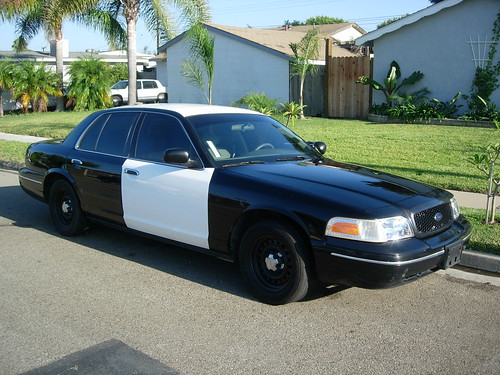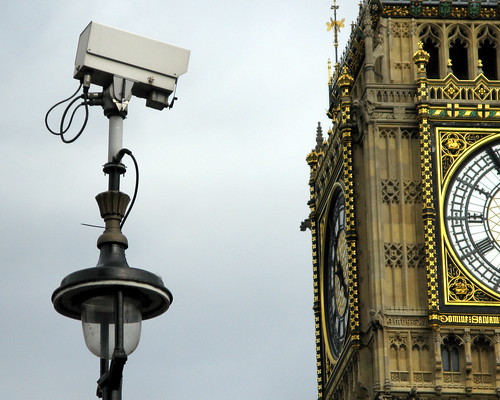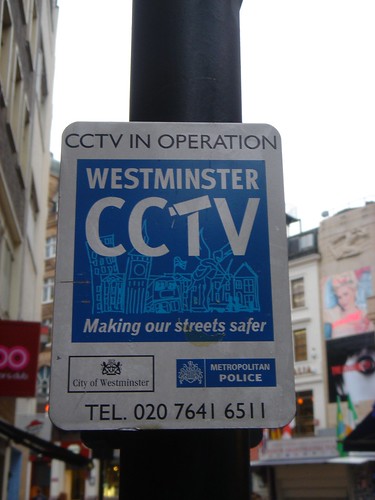A TransportGooru exclusive from Dr. Roadmap: “Where Old Police Cars Go to Die”
Dr. Roadmap Column: April 2, 2009
For Sale: 1997 Ford Crown Victoria, 110,434 miles, white roof and doors, all else black. See auction details.
Not your normal classified ad, is it? But then, this is not your normal car; it’s an ex-police car.
If you’ve ever wondered what it might be like to own a genuine squad car and tool around town faking out and intimidating other motorists, a few considerations bear keeping in mind before you embark on your NYPD, Real Stories of the CHP, or Police Story fantasy.
First of all, perish all thoughts of piloting a look-a-like police car unless you want to get pulled over for impersonating an officer.
“As ‘storekeeper,’ part of my job is to ensure that all hardware that identifies the car as a police unit is removed,” said Charles Alvarez of the Azusa Police Department in California. “We strip them of all the city decals. About the only thing we leave is the dual batteries, beefed up suspension and the big engine.”

Photo Courstey: Chris Sensenbach @ Flickr
Most police departments remove and recycle the door-mounted spotlights, the rooftop light bar, the sirens and the mobile data computer (which costs about $4-5,000). Yet, it appears that you could keep the original paint job if you so choose.
“We do not paint the doors over,” said Sgt. Doug Brown of the South Pasadena (CA) Police Department. “We definitely remove the identifying decals, but I know of no law against driving with the black-and-white paint scheme.”
Other police departments opt to paint over the doors in the same black color as the rest of the car. But in either case, at least you gain the benefit of a car that has been outfitted for peak performance, don’t you?
“In a lot of cases, the engine in our police cars is no different that what the average person can special order from the factory,” said Lt. Al Cheatham, of the Chino (CA) Police Department. “Yes, it is a special police package, but anyone can order it. There’s no law against it. On the other hand, most people wouldn’t like the ride; it’s too stiff.”
Let’s say that you still long for a car driven by the long arm of the law. You actually relish the responsive suspension of a well-built vehicle. As it turns out, so do others. Many departments remain reluctant to relinquish their “rides.”
“We try not to get rid of any car too soon,” said Rob Pipersky, a technical services officer for the Montclair (CA) Police Department. “What we do now, especially with the Caprices, is rebuild them at 100,000 miles. Some of ours have 180,000 miles on them.”
Pipersky went on to explain that Chevrolet Caprices represent the pinnacle of police pursuit cars. In fact, so many agencies choose to rebuild their Caprices that used parts are quickly becoming scarce. Even after their second spin through the odometer, Montclair’s finest prefers to recycle their cars.
“Some of our old cars go on to ‘lesser duty’ such as police assistance and administration,” continues Pipersky. “At peak periods, or during emergencies, we use these lesser-duty cars to augment the regular fleet. In addition, some visit the local schools or drive around the local shopping center. These daytime assignments provide a police presence. This way we get one extra year out of the cars.”
After the last ounce of utility gets wrung from these trusty steeds, they finally get put to pasture. However, the public can only obtain these past-their-prime cars by bidding on them.
Three other police agencies confirmed that auction is the preferred method of dumping dilapidated cars.
“Most agencies have these cars declared as surplus property once their service life is over, and from there they go directly to auto auctions,” confirmed South Pasadena’s Sgt. Doug Brown. “That’s what we do because these cars are not worth enough to try and sell them privately. Any vehicle coming out of the department is so worn out that I’m not sure anyone would want one.”
Thus, Sgt. Brown brought up the most important consideration of all when considering buying an ex-squad car.
“Think about it: You have a car that’s been driven practically 24/7, and that has close to 100,000 of odometer miles on it,” observed Chino’s Sgt. Cheatham. “Everywhere we go, the car is usually left running. Your idle time on top of the mileage is horrendous. That’s a tired engine by the time you get done with it. The suspension is no better. You have jackrabbit starts and hard braking. The car has undoubtedly been in a couple pursuits or more. When you’re going after people, those cars bottom out at the dips in the intersections. Personally, I would not want to buy one after a police agency was done with it.”
For anyone who remains undeterred in their quest to purchase their own personal patrol car, please don’t feel bad if you missed out on the Crown Vic’ with 110,000 miles (along with eight Caprices and twenty-one other Crown Victorias) that was sold during that particular auction. Auction sites abound on the Internet, where with a little detective work you can still ID an old forgotten workhorse of a municipal PD.
©2009, Dr. Roadmap®
————————————————————————————————————————————————
David Rizzo, better known as Dr. Roadmap, a Commute Management expert who writes about issues such as improving gas mileage (mpg), alternate routes, traffic congestion, ridesharing, commuting behavior and intelligent transportation systems on California’s Orange Country Register. He is well known for his comprehensive guide ever written on off-freeway commuting in Southern California, published in 1990. Two years later he became the first traffic reporter to offer daily alternate routes in real time over the air on one of the most popular morning radio shows in Los Angeles. His bi-weekly columns appear exclusively for TransportGooru. This is copyright-protected content. Please contact Transportgooru if you like to use this article or portions of this article. Thank you.












